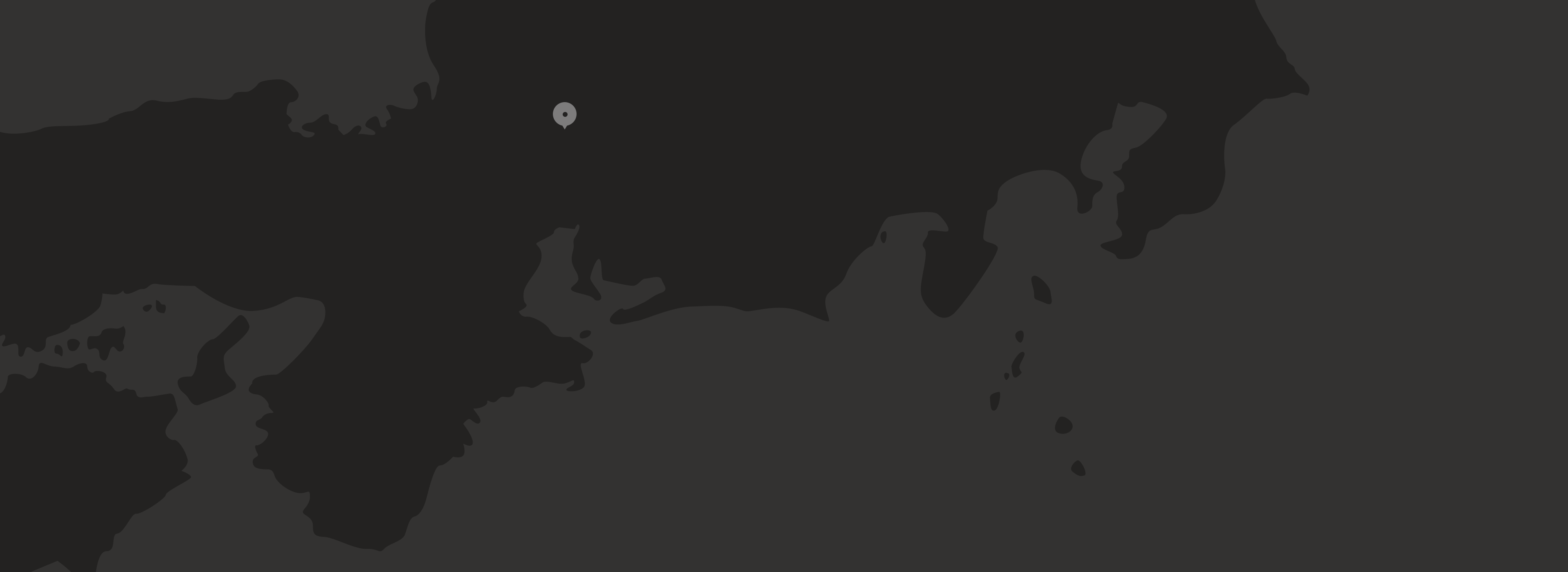ReservationSearch and reserve rooms
Click here to confirm, change or cancel your reservation
Shinkansen accommodation plan
提携法人専用予約
2024.05.15
1300 years of history. Nagara River Cormorant Fishing
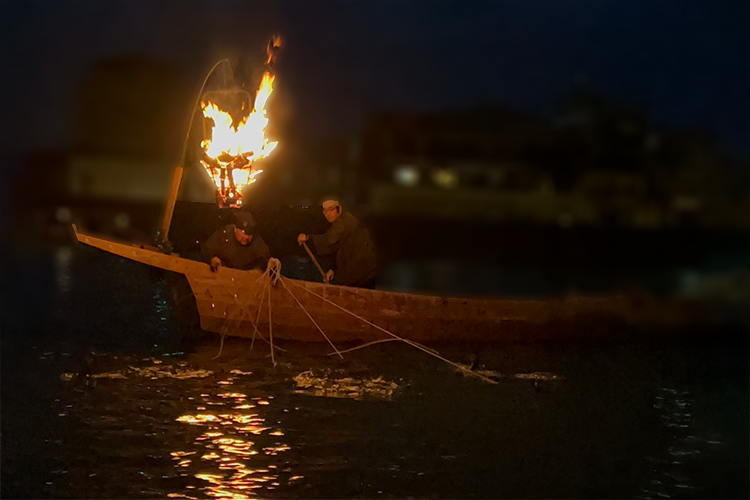
Gifu's Nagaragawa cormorant fishing has a history of over 1,300 years. Cormorant fishermen skillfully control the cormorants to catch sweetfish. It is a traditional cultural heritage that remains unchanged to this day. It is well known that the Sengoku warlord Oda Nobunaga invited his warlords to Gifu to watch cormorant fishing as a form of hospitality, and even after the Edo period, Nagaragawa cormorant fishing flourished under the protection of the Tokugawa Shogunate. Not only domestic visitors, but also dignitaries from overseas come to watch Nagaragawa cormorant fishing. The world's king of comedy, Charles Chaplin, praised Nagaragawa cormorant fishing as "wonderful" and described the cormorant fishermen as artists.
Currently, the cormorant fishermen of the Nagaragawa River belong to the Imperial Household Agency's Shikibusho and are the only fishermen in Japan who are recognized as "Cormorant Fishermen of the Imperial Household Agency." We visited the Nagaragawa Ukai Museum, where you can learn about this prestigious Nagaragawa River cormorant fishing from various angles.
What is Nagara River Cormorant Fishing?
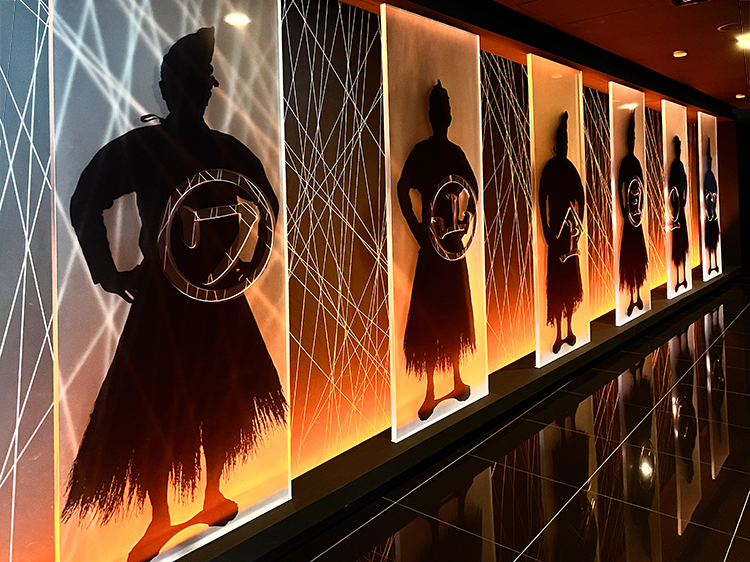
Silhouettes of cormorant fishermen are displayed at the entrance to the cormorant fishing museum. They are lined up in order of the length of their career.
Nagara River cormorant fishing is held every year from May 11th to October 15th, and six cormorant fishermen and cormorants are active in the fishing. There are six cormorant fisher families that produce the six cormorant fishermen: "Maruwa", "Maruyama", "Yamajo", "Maruyo", "Wachigai", and "Maruichi". The position of cormorant fisherman is hereditary, and only men born into the cormorant fisherman family can hold the position, with one per family. The cormorants used in cormorant fishing are wild sea cormorants caught in Hitachi City, Ibaraki Prefecture. Depending on the size of the ayu fish caught, cormorants can store five to six ayu fish on their long, soft necks.
Until the cormorant fishing begins, the sightseeing boats lined up on the Nagara River are bustling with people enjoying meals and chatting. As the sun sets, bonfires approach from upstream, faintly illuminating the area. When the cormorant fisherman appears on his cormorant boat, the surroundings are transformed into a fantastical world. At the same time, the fisherman's encouraging cries of "Hou, hou, hou" and the sound of the boatman tapping on the side of the boat echo through the darkness. This unique and fascinating soundscape has been selected as one of Japan's 100 Best Soundscapes.
The cormorant fisherman skillfully manipulates about 12 cormorants, checking the bulge of their throats as they spit the caught sweetfish into the boat one by one. The cormorants catch the fish instantly, so they are killed alive. For this reason, sweetfish caught by cormorant fishing are highly prized, and are even presented to the Imperial Family. The marks from the cormorant's beak on the fish's bellies are the proof of their quality, and they are called "tooth-printed sweetfish."
The museum conveys the invisible side of cormorant fishing on the Nagara River
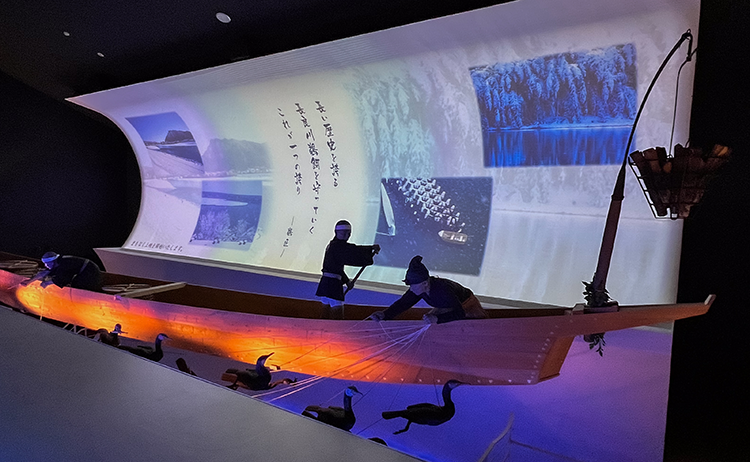
The theater inside the museum features a real cormorant boat and other objects made from tools.
Although the Nagaragawa cormorant fishing can only be viewed at night during designated periods, you can enjoy and learn about Nagaragawa cormorant fishing all year round at the Nagaragawa Cormorant Fishing Museum. Here you can learn about the invisible world of Nagaragawa cormorant fishing.
The entrance to the Nagaragawa Ukai Museum is on the second floor of the building, and offers a panoramic view of the Nagaragawa River, where cormorant fishing takes place. The first thing you see when you enter the museum is a large theater room. In front of the world's only picture scroll-shaped screen, an actual cormorant boat made by a shipwright who makes cormorant boats is on display. Above it are dolls of cormorant fishermen, cormorants, boatmen, and other figures, creating an intricately realistic reproduction of the cormorant fishing scene. The second floor of the museum is a space where you can experience the actual visible world of cormorants in Nagaragawa Cormorant Fishing.
After the guidance theater, you will be guided to the first floor. Looking up at the bottom of the cormorant boat, you will reach the first floor as if you are diving underwater, and the first floor will teach you about the "invisible world" of Nagaragawa cormorant fishing. In addition to the history and cormorant fishing, you will learn about where the cormorants come from, the lives of the cormorants and cormorant fishermen, and what they do when they are not fishing. Even if you have watched Nagaragawa cormorant fishing, there are many questions about the invisible parts that you can't answer unless you ask. The Nagaragawa Cormorant Fishing Museum will answer such questions, while also giving you some hands-on experience.
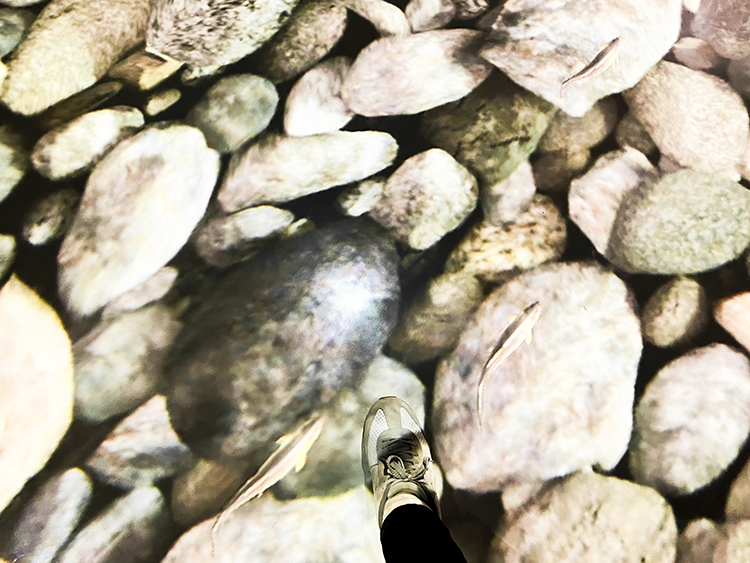
Nagara River and ayu fish swimming in it projected onto the floor
"Every day before the cormorant fishing begins, the cormorant fisherman ties a rope around the cormorant's neck to prevent it from swallowing any ayu larger than a certain size, but he allows the cormorant to swallow smaller fish, and continues fishing while keeping the cormorant motivated. Some people may think that the rope around the cormorant's neck seems cruel, but it is only possible because the cormorant fisherman and the cormorant live together every day and have a relationship of trust like that of family. I hope you will come and learn about the profound depth of cormorant fishing," said curator Kawai with a serious look in his eyes.
The role of the museum is to "communicate, promote, and protect" Nagaragawa River cormorant fishing

The exterior of the Nagaragawa Ukai Museum
At the museum, you can not only experience the traditions and cultural value of Nagaragawa cormorant fishing, but you can also experience Nagaragawa cormorant fishing at special events even when the fishing is not open. During the cormorant fishing season, you can only see the cormorant fishermen and the cormorants across the river, but outside the Nagaragawa cormorant fishing season, the museum holds events where you can listen to live demonstrations and explanations of cormorant fishing by active cormorant fishermen, as well as backstage tours and other events where you can talk to them.
"We have many visitors from Japan and abroad, but we also want locals to visit. Most locals know about Nagaragawa cormorant fishing, but by visiting the museum you can learn about the traditional culture of Gifu as a whole that surrounds Nagaragawa cormorant fishing and its background. The museum's appeal is that you can get a comprehensive look at Gifu, including the Nagaragawa River, Mt. Kinka, where Gifu Castle is located, and the unique scenery of Gifu. By learning the other side of Nagaragawa cormorant fishing, the people who live here will realize the value that exists in their town that should be preserved for the future. I hope to increase the number of people who are proud of their town," says Kawai with a smile.
The museum plans to hold fun events for children to see, touch, and participate in quizzes, as well as a market on the premises that will make locals want to return again and again. The Nagaragawa Ukai Museum does not just make Gifu's traditional culture prestigious, but also brings people closer to Nagaragawa cormorant fishing. Throughout the year, the Nagaragawa Ukai Museum offers a variety of experiences to enjoy Nagaragawa cormorant fishing, and serves as a touchpoint that connects local residents and tourists with Nagaragawa cormorant fishing.
Nagaragawa Ukai Museum
電話:058-210-1555
Address: 51-2 Nagara, Gifu City, Gifu Prefecture, 502-0071
Access: Get off at JR "Gifu Station" Get off at Gifu Bus "Ukai-ya" 5 minutes walk
HP: https://www.ukaimuseum.jp/
SNS: https://www.instagram.com/ukaimuseum_gram/
*For details on business hours and holidays, please check the link above.




